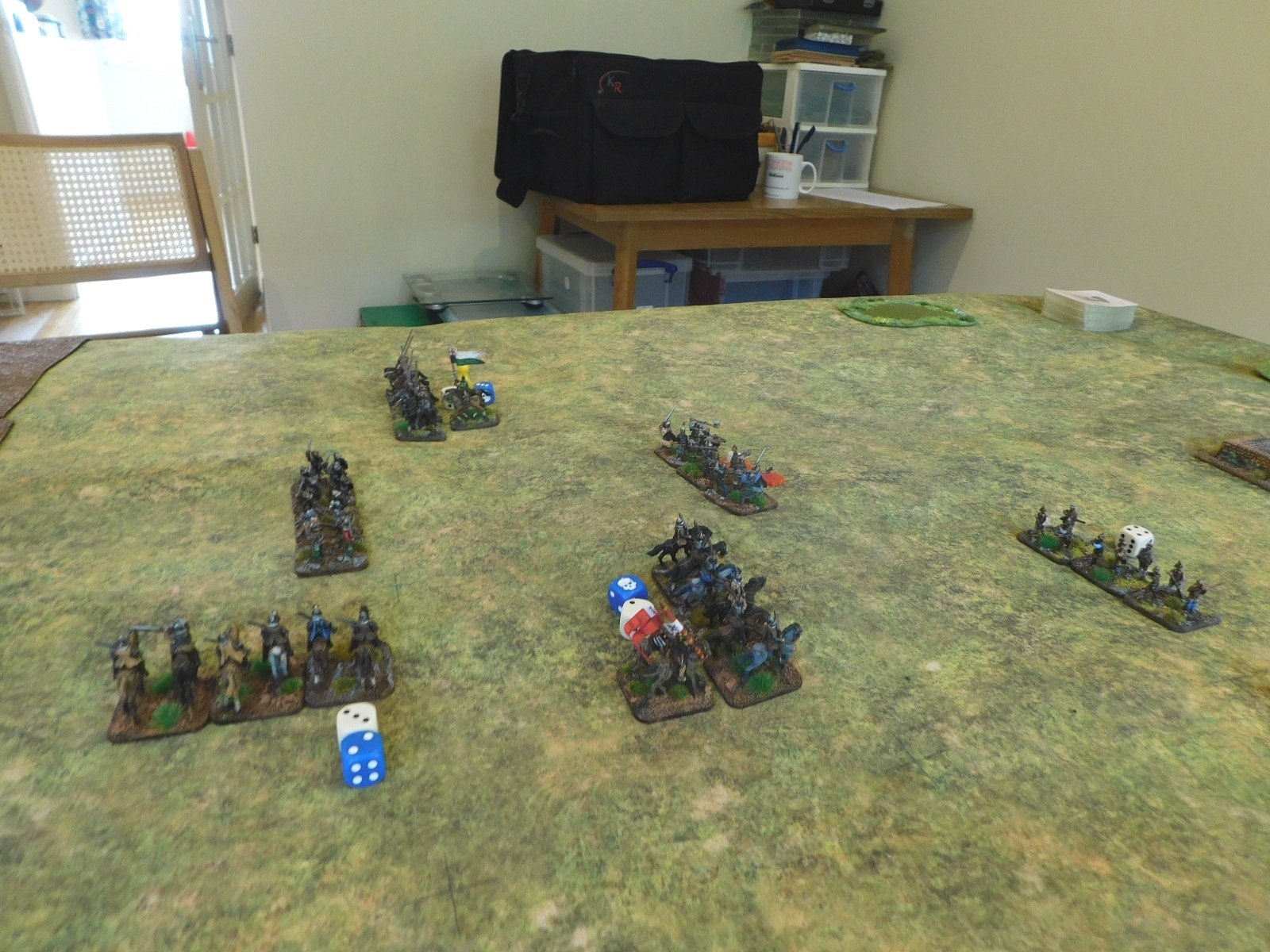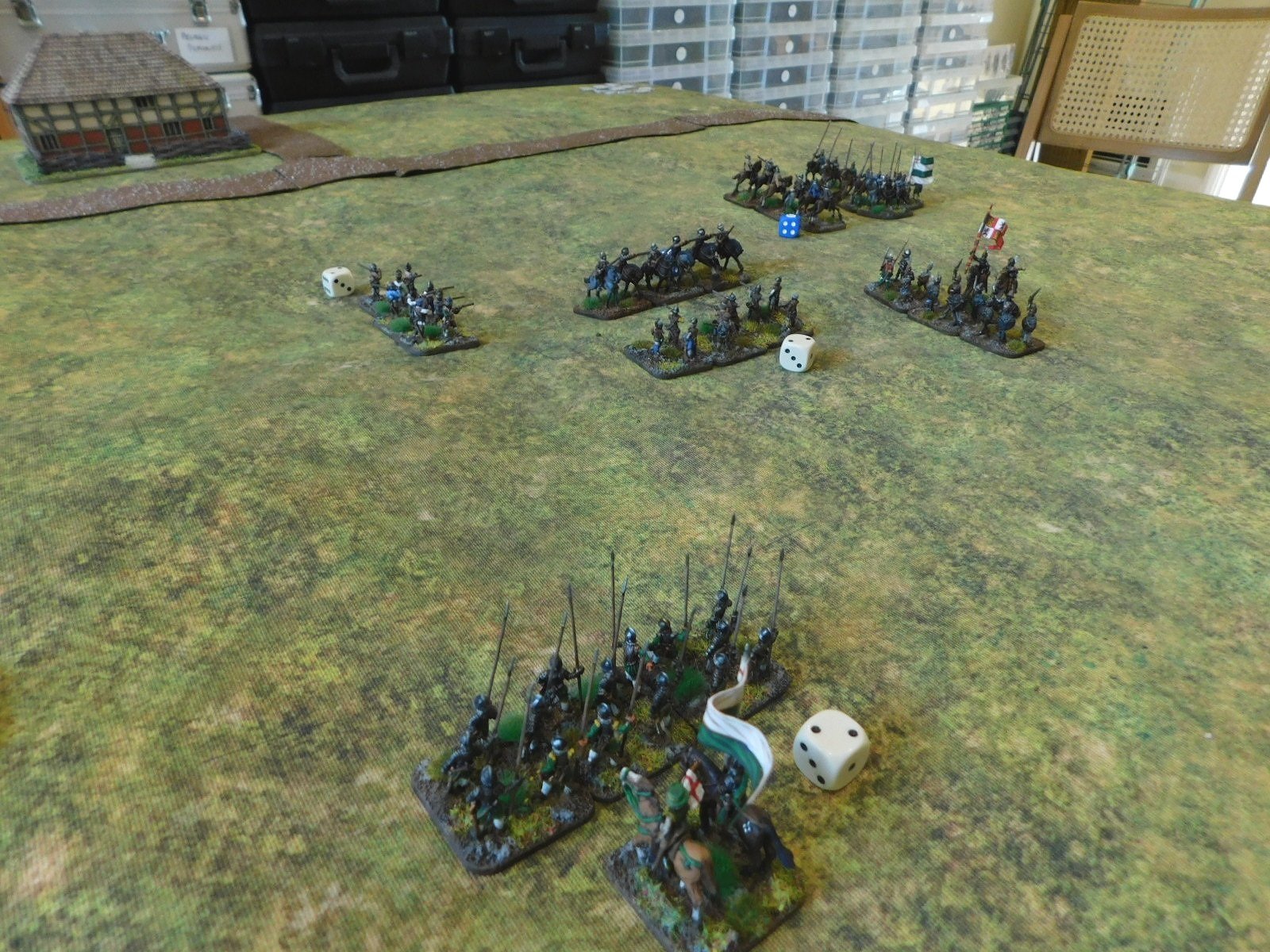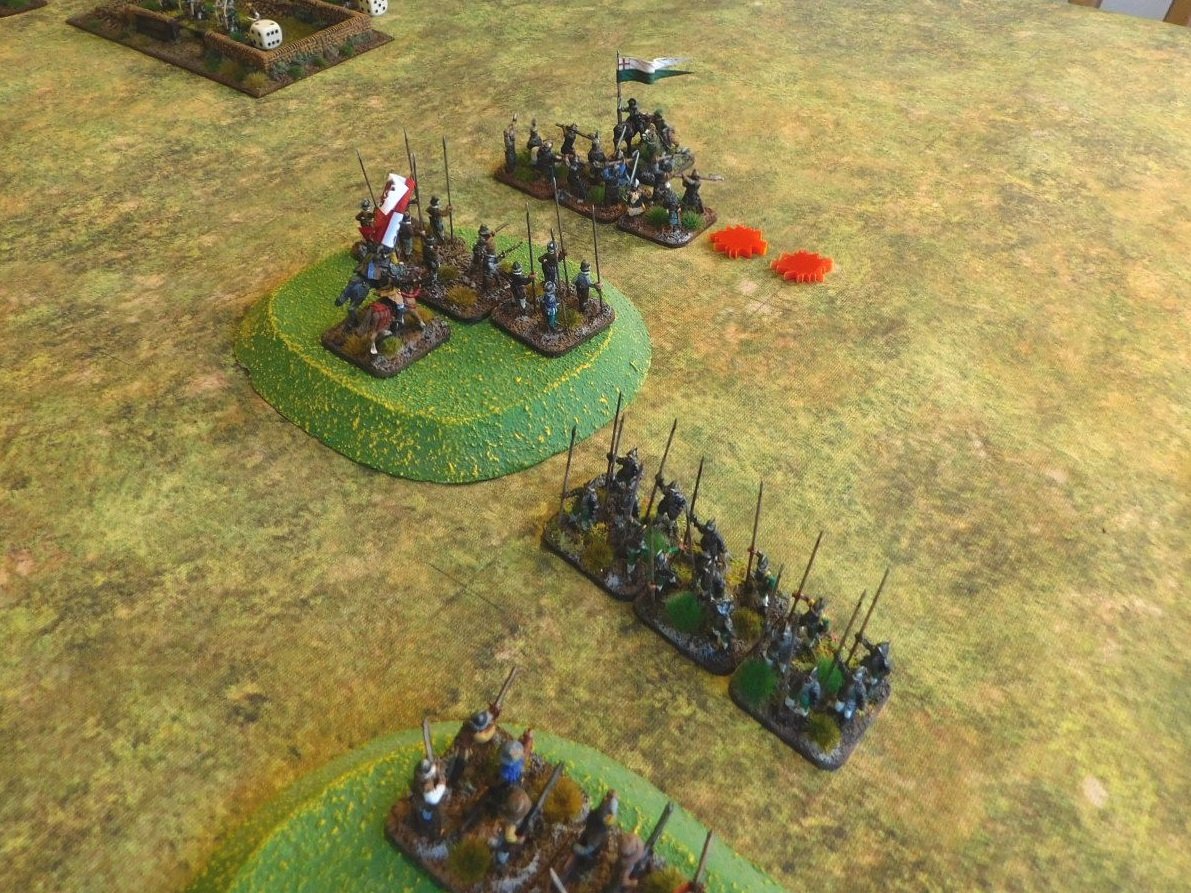FK&P AAR: Fire Over Barsetshire, Round 2
/This was the return match of Rob and I’s clash of Elizabethan English and Spanish forces in a fictional encounter in the equally fictitious county of Barsetshire.
In our first game, I had played the Spanish and achieved a decent win, so now it was time to see if I could do the same thing playing the English.
The Spanish Tercio: veterans all!
I was a bit nervous about the Spanish Tercio, so determined to avoid it for as long as possible. I therefore placed my Militia on my left flank, opposite the Tercio, determined to use the walled enclosures as a fortress from which to fight from. That left my Hunting Party longbowmen and commanded shot in the centre; and the contingent from the Royal army on the right.
As mentioned above, my plan was to hold the Militia back and push the Royal Army forward as fast and hard as possible, hopefully winning on the right flank before turning to roll up the Spanish once I’d done so.
As the battle opened, I therefore pushed forward my right, but the Spanish facing the Royal Army didn’t come forward. In fact they moved slightly sideways into the centre of the field, leaving my best troops hanging facing no-one to fight!
Meanwhile, on the left, the Tercio moved forward ponderously, but it was in the centre that we would first see action as the Spaniards’ Irish contingent, led by some Kerns, rushed forward towards the Hunting Party troops.
As the Kerns came forward, the English longbowmen did their thing, and the wild Irish were soon sent packing. This left the Irish pike, commanded shot and swordsmen to contest the centre: a fight that would continue for some time without clear resolution.
Meanwhile the Tercio were still ponderously heading for my refused left flank:
But it was on the right flank that things became very intense very quickly.
As mentioned above, my Royal Army contingent had marched forward as quickly as possible, determined to win the battle before the Spanish Tercio could get stuck in. They were facing the left hand edge of the Irish brigade and a brigade known as the Volunteers consisting of swordsmen and mounted arquebusiers. My veteran troops should have carved their way through them nicely but actually ended up effectively losing the individual melees that followed!
Besides costing me my best troops and about half my victory medals, this let a unit of Spanish mounted arquebusiers slip through my line to threaten the Royal Artillery.
Now those of you who play For King and Parliament will know that artillery is usually not very useful in open battle. Rarely do you have the equivalent of a Grand Battery to blow huge swathes out of the enemy line: the standard is to have one or maybe two slow-firing pieces that are as useful as battlefield dressing. As the arquebusiers charged in, therefore, I resigned myself to losing another unit and another victory medal!
I had obviously underestimated the Royal gunners, as rather than being run down like rabbits, they sent the arquebusiers routing off the field!
A nice success, but now the Spanish Tercio arrived.
Choosing to drift into the centre of the field, the enemy pike and shot launched an attack on the two walled enclosures defended by the Militia and the remnants of Sir Fitzgerald Percy’s Hunting Party.
Although my troops survived this first wave of attacks, it was a costly business. Admittedly the Militia were relatively unscathed, but they were under severe threat from the front and flank; and my centre had taken a hammering and was still faced by an unbroken line of enemy pike and shot.
I was also now down to only two victory medals (meaning the loss of one more unit would cost me the battle as my men lost their morale and fled) and although my opponent was in the same situation, his units were mostly much healthier than mine and, as you can see in the pics above, in a far better tactical position.
I had the initiative, but if I didn’t win the battle this turn, then that would most likely be it as the relatively fresh Spanish troops hit my tired and disordered troops in the flank.
You remember how I said that artillery was mostly useless in open battle? Well the Royal Artillery were about to prove me wrong again.
Up ahead of their position, a unit of Spanish swordsmen threatened the flank of some already-disordered English pike. Unbelievably, the Royal Guns managed to not only fire three times in the same turn but, with their last round of ammunition, they also managed to score three hits on the Spaniards…sending them from the field and costing Rob his last two victory medals just before he could finish me off!
I really did feel that I had managed to snatch the narrowest of victories from the gaping jaws of defeat!
It had been a great game that showed how flexible the FK&P engine is: able to cope with the peccadilloes of the Elizabethan era as well as it does the English Civil War and Eastern Front.
One final picture, if only to showcase Rob’s beautifully painted troops and terrain. Here is the Spanish Forlorn Hope: the crew of the Sao Martinho happily taking no part in the battle as they loot a nearby farm!






























